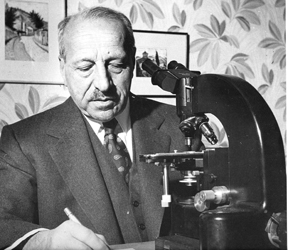This morning I awoke to the news that Chris Christie, the governor of New Jersey, thinks parents should have a choice about whether to vaccinate their children. He has since backtracked on his statement and affirmed his support for vaccination. But as a measles outbreak spreads across California, Arizona, and twelve other states, it’s exposing the tension between personal autonomy and community well-being that’s an ever-present part of the doctrine of public health.
The current measles outbreak most likely started when a single infected individual visited Disneyland over the holidays, exposing thousands of vacationers to a highly communicable disease that the CDC declared eliminated from the U.S. in 2000. At another time—say, ten years ago—the outbreak might have been contained to a handful of cases. But as numerous media outlets have reported, immunization rates have been dropping in recent years, particularly in wealthy enclaves where parents still believe the debunked link between vaccines and autism, aim for a toxin-free lifestyle, or distrust Big Pharma and the vaccine industrial complex.
I am young enough to have benefited from the scientific advances that led to widespread immunization in the 1970s, and old enough to have parents who both had measles as children and can recall the dread surrounding polio when they were growing up. Vaccines are a clear example of how public health is supposed to work. One of the unambiguous public health successes of the twentieth century, vaccines have transformed ailments such as pertussis, diphtheria, and chickenpox from fearsome childhood afflictions that could cause lifelong complications, and even death, to avertible diseases.
The basic premise of public health is the prevention of disease, and public health guidelines have led to increased life expectancy and decreased incidence of communicable illnesses, as well as some chronic ones. Yet public health regulations have always had to balance individual civil liberties with public safety. People are free to make their own choices, as long as they don’t infringe on the public good. For the most part you’re still allowed to smoke in your own home (although your neighbors could sue you for it), but you can’t subject me to your secondhand smoke in restaurants, bars, or office buildings.
I believe in handwashing, USDA inspections, the use of seatbelts, and the pasteurization of milk. I believe in quarantines when they are based on the best available information and are applied evenly. (A quarantine that isolates all travelers from West Africa who have symptoms of Ebola would be reasonable; one that singles out black Africans from anywhere on the continent regardless of health status would not.) In short, I am in favor of a coercive public health apparatus. The problem with the current measles outbreak is that enforcement has become too lax, with too many states allowing parents to opt out of immunizing their children because of ill-conceived beliefs that are incompatible with the public good.
Every parent spends a lifetime making choices about how to raise their child, from environment and lifestyle to moral and ethical guidance. But some choices have a greater capacity to impact the lives of others. If you want to let your child run around with scissors, watch R-rated movies, and eat nothing but pork rinds all day, you can. If you want to home-school your child because you want greater control over the curriculum he or she is being taught, you’re free to do that, too. And if you want to keep your child from getting vaccinated against communicable diseases, then the state won’t step in to force you. Opting out of vaccinations might not make you a bad parent any more than raising a fried-snack fiend might. But unless you’re planning to spend your days in physical isolation from every other human on the planet, it does make you a bad member of the public.




